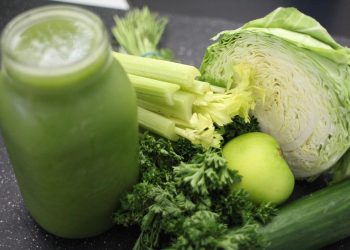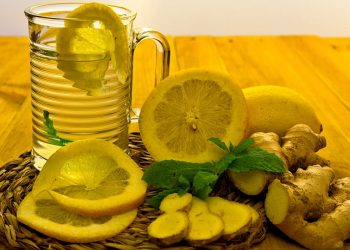Natural remedies for lasting pain relief are not just an alternative; they can be a lifeline. If you’re struggling with discomfort, you’re not alone. Millions of people seek effective ways to ease their pain without resorting to heavy medication. Understanding how your body responds to natural treatments can empower you to regain control over your well-being.
Pain can often feel isolating, but it doesn’t have to define your life. You deserve to feel good in your skin, and the solutions might be closer than you think. This guide will explore seven natural remedies that have shown promise in providing lasting relief and restoring your quality of life.
Contents
Understanding Pain and Its Impact
Before diving into the remedies, let’s take a moment to understand what pain really is. Pain is your body’s way of signaling that something is wrong. It could be acute, like a sprain, or chronic, persisting for months or even years. It’s important to recognize that pain affects not just the body, but also the mind and spirit.
By exploring natural remedies, you can take a more holistic approach to your health, addressing not just the symptoms but the root causes of your discomfort.
1. Turmeric: The Golden Spice
Turmeric is often celebrated for its anti-inflammatory properties. It contains curcumin, a compound known to help alleviate pain associated with arthritis and muscle soreness.
- How to Use It:
- Add turmeric to your meals as a spice.
- Make a soothing turmeric tea by mixing it with hot water, honey, and a splash of lemon.
Research has shown that curcumin can reduce inflammation and pain. Incorporating this vibrant spice into your diet may not only flavor your food but also boost your overall health. For more information, check out the National Institutes of Health.
2. Ginger: Nature’s Pain Reliever
Ginger is another powerful anti-inflammatory agent. It’s not just a culinary delight; it also offers significant pain relief, particularly for menstrual cramps and muscle soreness.
- How to Use It:
- Brew fresh ginger tea by steeping slices of ginger in hot water.
- Add ginger to smoothies or stir-fries for an extra kick.
Studies suggest that ginger can reduce pain and improve mobility. Use ginger regularly to see long-term benefits. More on its effects can be found at WebMD.
3. Willow Bark: Nature’s Aspirin
Willow bark has a long history of use as a natural pain reliever. It contains salicin, which is similar to the active ingredient in aspirin.
- How to Use It:
- Available in teas, capsules, or tinctures, it’s essential to follow dosage recommendations.
Many find relief from headaches and lower back pain with willow bark. Consult with a healthcare provider before starting any new remedy, especially if you’re already taking other medications.
4. Acupuncture: Targeted Relief
Acupuncture is an ancient practice rooted in Traditional Chinese Medicine. By inserting thin needles at specific points, it can stimulate your body’s pain-relief mechanisms.
- Benefits:
- Reduces chronic pain conditions, including migraines and joint pain.
- Promotes relaxation and stress relief.
While results can vary, many report feeling a significant decrease in pain after a few sessions. Research supports acupuncture as an effective treatment for various pain-related issues. To learn more, visit the National Center for Complementary and Integrative Health.
5. Essential Oils: Aromatic Healing
Essential oils like lavender, peppermint, and eucalyptus can offer soothing relief for various types of pain. Their aromatic properties can also promote relaxation and improve your mood.
- How to Use Them:
- Inhale directly from the bottle or use a diffuser.
- Dilute essential oils with a carrier oil and massage onto the painful area.
Aromatherapy can be a wonderful addition to your pain management routine, providing both physical and emotional benefits.
6. Mindfulness and Meditation: Mental Clarity
Mindfulness and meditation can change the way you experience pain. By focusing your mind and calming your thoughts, you can reduce the perception of pain.
- How to Practice:
- Set aside a few minutes each day for deep breathing exercises.
- Explore guided meditations focused on pain relief.
Research shows that mindfulness can significantly lower pain levels and improve quality of life. Incorporating these practices into your daily routine can empower you to handle pain with grace and resilience.
7. Diet and Hydration: Fuel for Recovery
What you eat and drink can have a profound impact on your pain levels. A diet rich in anti-inflammatory foods can help reduce discomfort.
- Foods to Include:
- Leafy greens
- Fatty fish (like salmon)
- Nuts and seeds
- Berries
Also, don’t underestimate the power of hydration. Drinking enough water helps maintain joint lubrication and overall body function, which can alleviate pain.
Bottom Line
Natural remedies for lasting pain relief can empower you to take control of your health. From turmeric to mindfulness, there are numerous options available that cater to your unique needs. Remember, your body is a remarkable thing, capable of healing and regeneration.
Before implementing any new treatments, consult with a healthcare professional, especially if you have pre-existing conditions or are taking medications.
FAQs
1. Are these remedies safe?
Generally, yes, but always consult your doctor before starting any new treatment.
2. How quickly can I expect results?
Responses vary; some may feel relief within days, while others may take weeks.
3. Can I combine these remedies?
Absolutely! Many people find that a combination of remedies works best for them.
Take the first step towards a pain-free life. Your journey to relief begins today!
Get Your FREE Natural Health Guide!
Subscribe now and receive our exclusive ebook packed with natural health tips, practical wellness advice, and easy lifestyle changes — delivered straight to your inbox.















